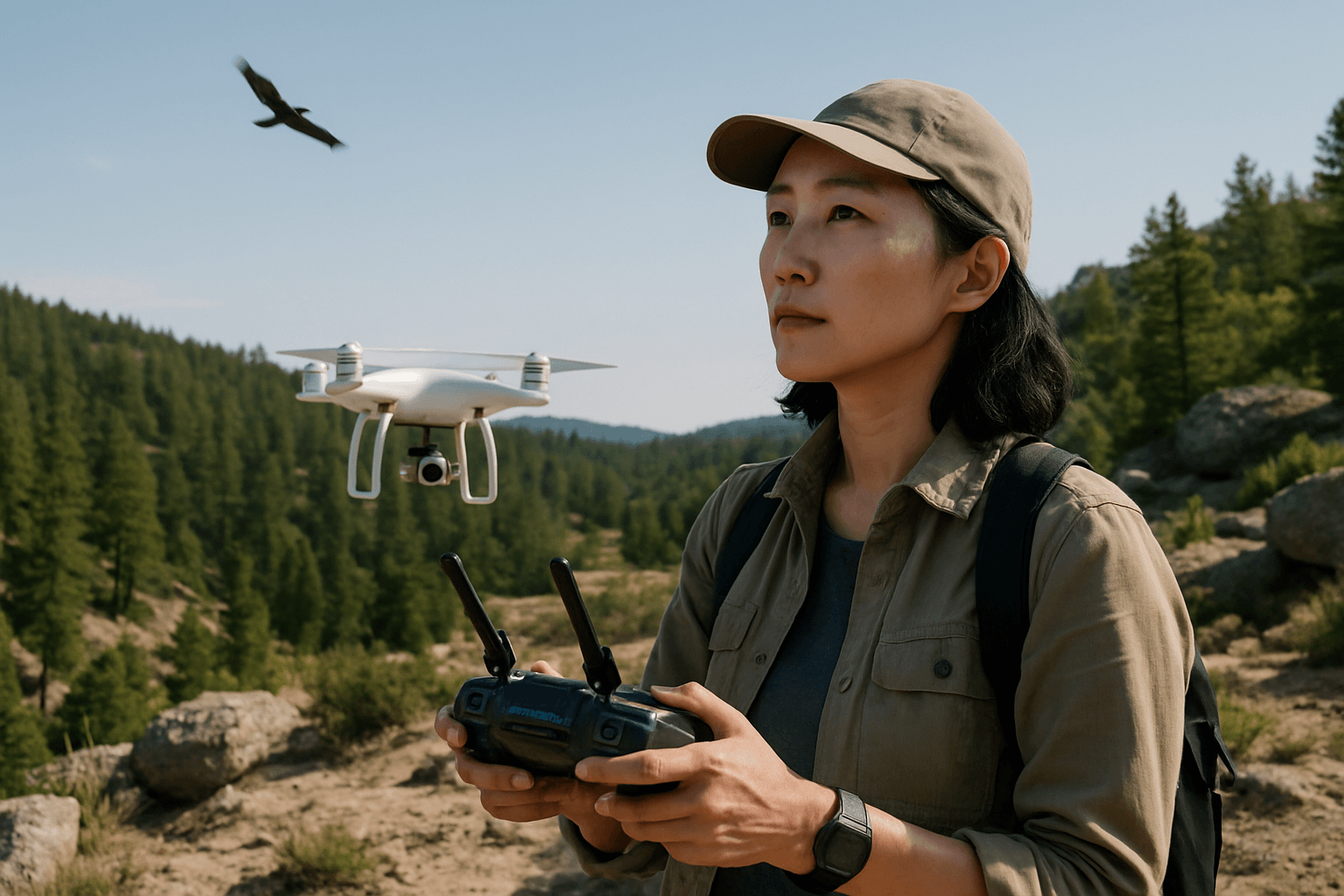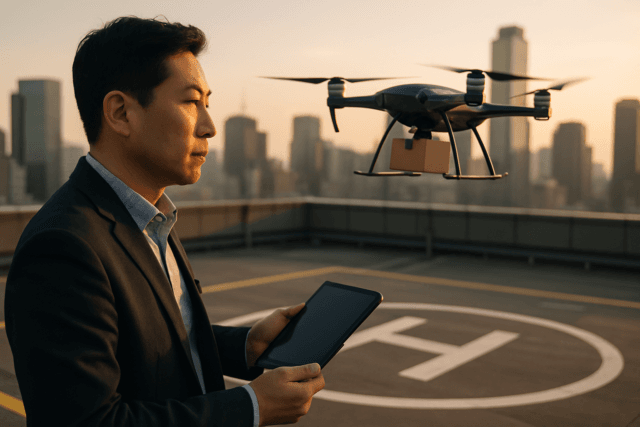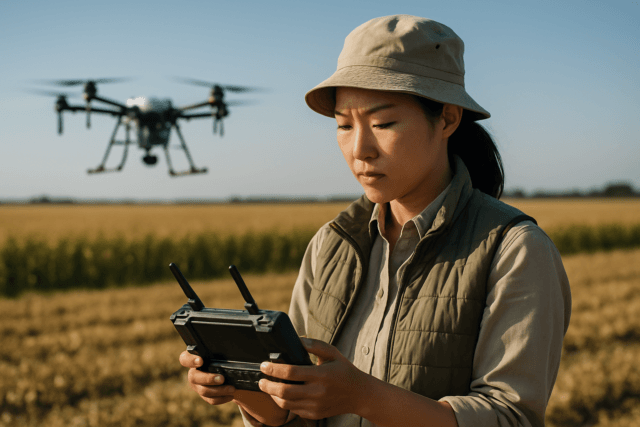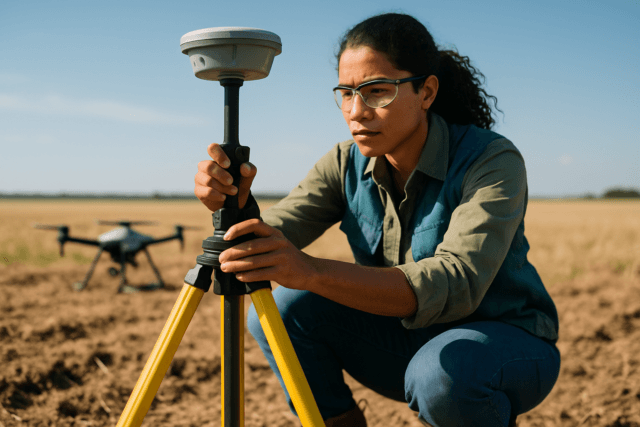The elusive and dynamic hunting strategies of birds of prey have long captivated naturalists and scientists alike. However, direct observation in their natural habitats often presents significant logistical and ethical challenges, making comprehensive study difficult. The advent of drone technology is rapidly transforming this field, offering unprecedented opportunities to meticulously observe, record, and analyze the complex behaviors of raptors during their hunts with minimal disturbance and enhanced precision.
The Dawn of a New Era in Raptor Research
Traditional methods for studying birds of prey, such as ground-based surveys or crewed aircraft, often fall short when attempting to capture the intricate details of hunting. These methods can be expensive, time-consuming, and carry safety risks for researchers, while also potentially disturbing the birds themselves. Unmanned Aerial Vehicles (UAVs), or drones, provide a revolutionary alternative, enabling researchers to access remote and otherwise inaccessible areas like treetops, rocky outcrops, and coastal cliffs where raptors often nest and hunt.
Overcoming Traditional Observational Challenges
Drones address many of the limitations of older research techniques. They offer greater user control and reproducibility, significantly higher image resolution compared to satellites, and increased accessibility to difficult terrains. The ability to deploy drones for monitoring nests and individuals has proven to be more efficient, safer, and more cost-effective than traditional methods involving nest climbing or large aircraft. This technological leap reduces human effort and provides accurate information with minimal disturbance to the birds’ natural habitat.
Unveiling Hunting Dynamics with Drone Technology
While much of the published literature on drones in raptor research focuses on nest monitoring and population counts, the capabilities of UAVs are equally invaluable for studying the birds’ predatory actions. By operating at a distance and from unique aerial perspectives, drones can capture the nuanced interactions between raptors and their prey, offering insights previously unattainable.
Capturing Complex Flight Paths and Strategies
Drones equipped with high-resolution cameras can record the precise flight paths, acceleration, and aerial maneuvers of birds of prey as they engage in pursuit. This allows scientists to analyze the “guidance laws” that dictate a raptor’s hunting strategy. For instance, studies on Harris’ hawks chasing unpredictable ground targets have used high-speed cameras and 3D modeling to reveal the complex blend of guidance laws these birds employ, indicating that their turns are guided by both the angle to the target and the rate at which the target’s direction is changing. This kind of detailed kinematic data is crucial for understanding how raptors adapt their pursuit strategies in cluttered environments or when tracking erratic prey.
Minimizing Disturbance for Authentic Observations
One of the critical advantages of drones is their potential to observe wildlife with reduced disturbance. While some studies have documented instances of birds reacting to drones due to noise, shape, or flight parameters, many have found minimal to no disturbance, especially when drones are operated with care and at appropriate distances and altitudes. For example, studies on buzzards and northern goshawks found that adult birds reacted weakly to the presence of drones during nest monitoring, suggesting that with careful operation, drones can capture natural behaviors without significant interference. This minimal impact is vital for ensuring that the observed hunting behaviors are authentic and not influenced by the presence of research equipment.
Advanced Data Collection and Analysis
The data gathered by drones is extensive and varied, providing a rich foundation for in-depth analysis. Beyond simple visual recordings, advanced sensors and analytical tools further enhance the research capabilities.
High-Resolution Imagery and Thermal Sensing
Modern drones can carry a range of sensors, including high-resolution RGB cameras and thermal cameras, which are instrumental in tracking wildlife. These allow researchers to obtain clear visual records of hunting sequences, even in challenging lighting conditions or when prey is camouflaged. Thermal imaging can help identify warm-blooded prey hidden in dense vegetation, providing a more complete picture of a raptor’s hunting environment and success rates. Drone imagery, captured at various altitudes, provides detailed information that can be processed to understand habitat use and predator-prey interactions.
AI and Machine Learning for Behavioral Insights
The sheer volume of data collected by drones necessitates sophisticated processing methods. Artificial intelligence (AI) and machine learning (ML) are becoming indispensable in transforming raw drone data into actionable insights. These technologies can automate animal detection, classify species, and analyze behavioral patterns, foraging strategies, and responses to environmental changes. For instance, AI models can be trained to identify specific hunting behaviors, track individual birds over time, or even estimate hunting success rates from drone footage, making the analysis of large datasets more efficient and accurate.
Navigating the Ethical and Practical Landscape
Despite the significant advantages, the use of drones in studying birds of prey is still a developing field with ethical and practical considerations that need careful management.
Ethical Considerations and Disturbance Mitigation
While many studies report minimal disturbance, the potential for drones to cause stress or alter raptor behavior remains a concern. Factors like drone noise, flight speed, approach angle, and even color can influence a raptor’s reaction. Some birds may perceive drones as predatory, triggering vigilance or escape behaviors, and in rare cases, even direct attacks have been observed. Researchers must adhere to best practices and guidelines to minimize impact, such as maintaining appropriate distances and altitudes (e.g., above 80 meters for breeding birds), using quieter multi-rotor drones, and avoiding direct overhead approaches. Continued research is needed to understand species-specific responses and potential long-term physiological impacts.
Regulatory Hurdles and Technological Limitations
Operational limitations, such as battery life (often around 25 minutes for smaller drones) and the need for pilots to maintain a line of sight, can restrict drone utility over long distances or extended observation periods. Furthermore, regulatory frameworks for drone operation vary by region and can impose limitations on flight zones, altitudes, and payload capacity. Overcoming these technical and regulatory hurdles, alongside the ongoing development of more advanced, quieter, and longer-endurance drones, will be crucial for expanding their application in wildlife research.
The Future of Raptor Hunting Research
The integration of drones into ornithological research marks a significant step forward in understanding the complex world of birds of prey. By providing unprecedented views and data collection capabilities, drones are helping scientists unlock the secrets of raptor hunting behavior with greater detail and less interference than ever before. As technology advances and ethical guidelines mature, drones will undoubtedly continue to play an increasingly vital role in both scientific discovery and conservation efforts for these magnificent aerial predators.





